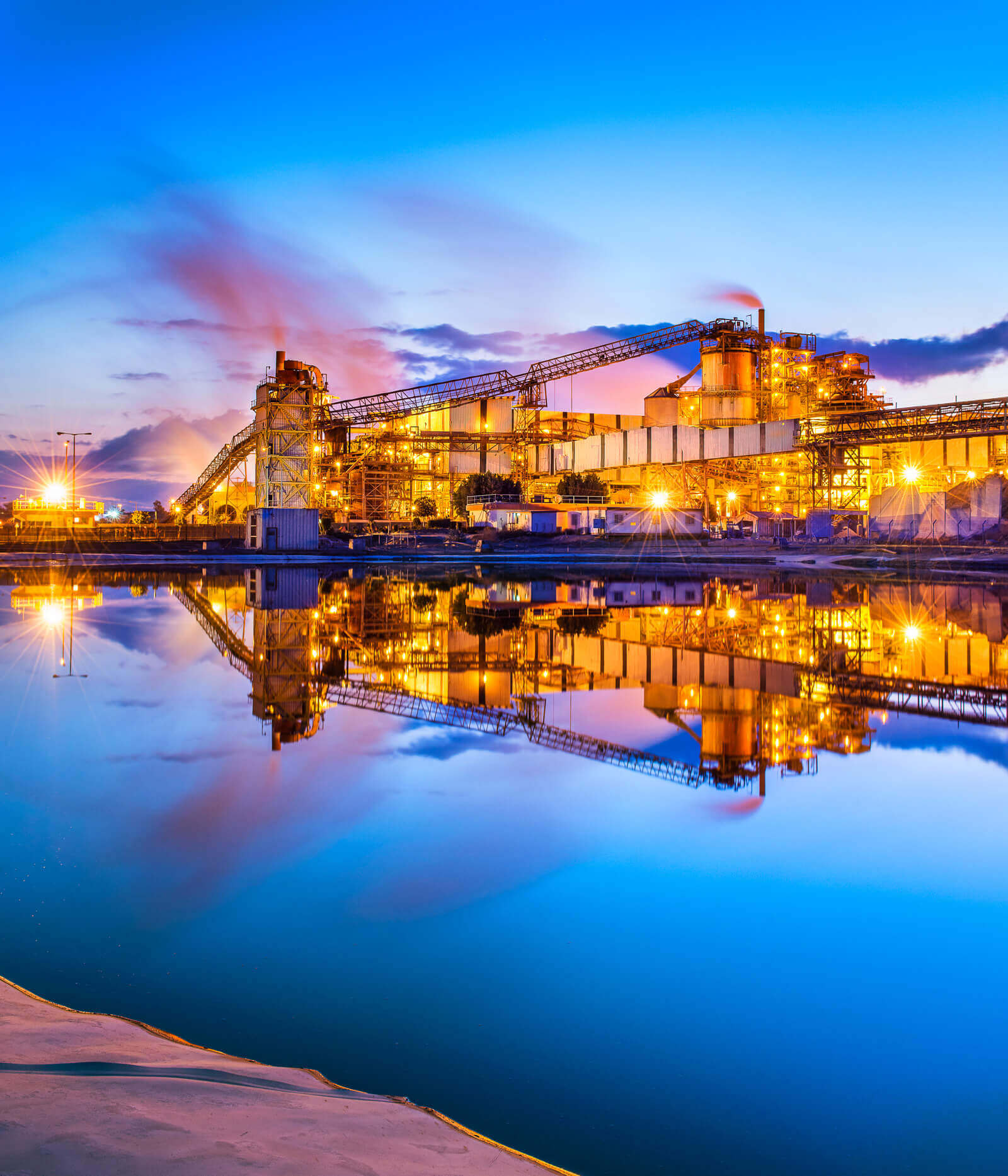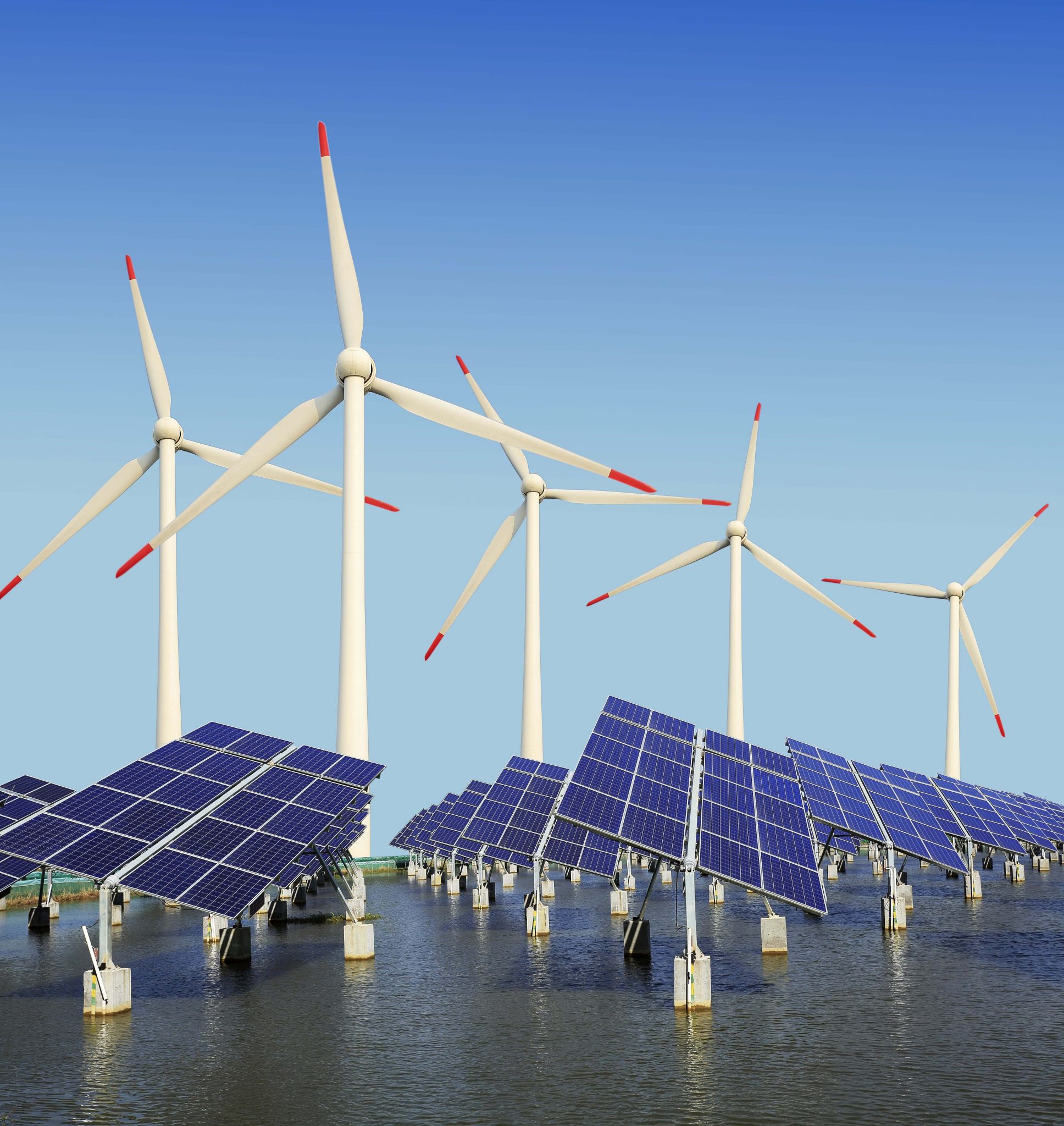Energy
- Success Stories: Energy
- Energy Efficiency
- Independent Power Production
- Transition to Natural Gas
- Renewable Energy
All industrial activity requires energy. ICL’s energy consumption is both direct and indirect. Direct energy is energy produced by fuel combustion, mainly used to operate steam boilers, electricity generators and similar installations at ICL production sites, as well as fuel for vehicles. Indirect energy use is mainly via our purchase of electricity and steam from external suppliers.
There are two types of energy sources: non-renewable energy, which is derived from fossil fuels, and renewable energy sources, such as hydropower, sun and wind. Energy derived from non-renewable fossil fuels contribute to emissions of both health-related air pollutants as well as greenhouse gases. In the passing decade, ICL has undertaken a major transition regarding it’s fossil fuels usage. In the past, the company relied mostly on heavy fuels such as fuel oil, diesel and oil shales. These have now been almost completely replaced by usage of natural gas, a much cleaner fuel.
In addition, as part of its sustainability vision for 2030, ICL has recently set a target of annually increasing by 30% (year-on-year) the amount of renewable energy it consumes (replacing non-renewable sources). Almost all ICL Europe sites transitioned to 100% renewable electricity during 2019-20, and the company plans to install PV solar energy capacity in several global sites. 10% of the global ICL indirect energy consumption in 2019 was already derived of renewable sources.
Note: In the charts below, 2008 appears as the base year used by ICL to measure its long-term performance (in addition to short-term, year by year performance).
ICL’s GOAL IS TO ACHIEVE 8 USD MILLION IN ENERGY SAVINGS IN 2020 COMPARED WITH 2019.
Following are the yearly trends in direct and indirect energy consumption. The major trend changes and overall increase in 2018-9 were caused by the operation of the new Sdom CHP (Combined Heat and Power) plant, a significant operational transition that brought forward significant environmental improvements. The new plant commenced operations from August 2018, and 2019 was its first full year of operation. See further explanation below. Note that in accordance to the GRI methodology, the 2019 direct energy figure is slightly lower (by 6%) than the sum of the global fuels consumed, since it excludes the 1.93 Million GJ sold as surplus electricity to the Israeli national grid.
Total direct energy consumption by geographical regions
Total indirect energy consumption by geographical region
In August 2018, ICL made a significant shift to self-electricity production, with the full operation of the new, highly efficient and 100% natural-gas based Sdom CHP (combined heat and power) plant. 2019 was the first full year of operation for the new plant. The plant is supplying most of the electricity demand for all ICL’s Israeli sites, and thus replacing previously externally purchased electricity in ICL Israel. A significant amount of electricity from the new plant is also sold by ICL to the Israeli national grid and external customers (an overall of 540K MWh in 2019, approx. 30% of the plant’s produced electricity). The plant also supplies ICL Sdom various facilities with all needed steam.
Following the operation of the new Sdom power plant, ICL’s total (direct+indirect) energy consumption in 2019 has increased by 15% compared to 2018, and by 18% compared to 2017 (before the new power plant). Direct Energy has increased by 36% between 2019 and 2017, while Indirect energy has decreased by 32%. The increase in the overall energy figures which combine both fuels and electricity, is an unavoidable consequence of the major transition to self-electricity generation. Despite the fact that ICL sites have consumed very similar amounts of electricity overall- the 2018-9 figures now include the increased consumed natural gas ‘gross’ amounts, replacing some of the 2017 ‘net’ electricity amounts. Despite the very high efficiency of ICL’s new plant, not all natural gas is converted to the consumed electricity and steam, and the 2018-9 energy figures now include these unavoidable conversion losses. In a broader perspective, the new power plant allows for a reduction of the overall energy-related environmental impact on the state of Israel, as evident from the significant reduction in NOx emissions Note that while the overall energy consumption figures are higher by 18% between 2017-19, the total ICL GHG emissions have remained almost constant (+1%). This is due to the much greater efficiency and less carbon intensity of the new plant, compared with the previous external sources of electricity in Israel.
The previous 18% increase in total energy consumption between the years 2015 to 2016 was impacted by the return to a full production capacity of several of our largest energy consuming sites, following a prolonged worker-strike at these sites in 2015. It was also derived from the addition of ICL China YPH JV, a major, recently acquired operation, to our reporting scope in 2016. A portion of the increase was offset by our extensive energy savings initiatives.
ICL strives to continuously improve energy efficiency and to decrease our emissions by increasing our use of clean and renewable energy.
Total fuel consumption by type
Due to ICL’s major transition to Natural Gas, 90% of the total remote fuel consumption of ICL Global facilities in 2019 was derived from NG (compared to only 26% in 2008, pre-transition). This transition was a major cause in reducing emissions such as NOx, PM and GHG’s. Natural Gas consumption has increased significantly in 2018-9 due to the sharp increase in its consumption to produce electricity and steam in the new Sdom CHP plant (including a significant amount of electricity that is now sold to external customers).

Energy per Production









